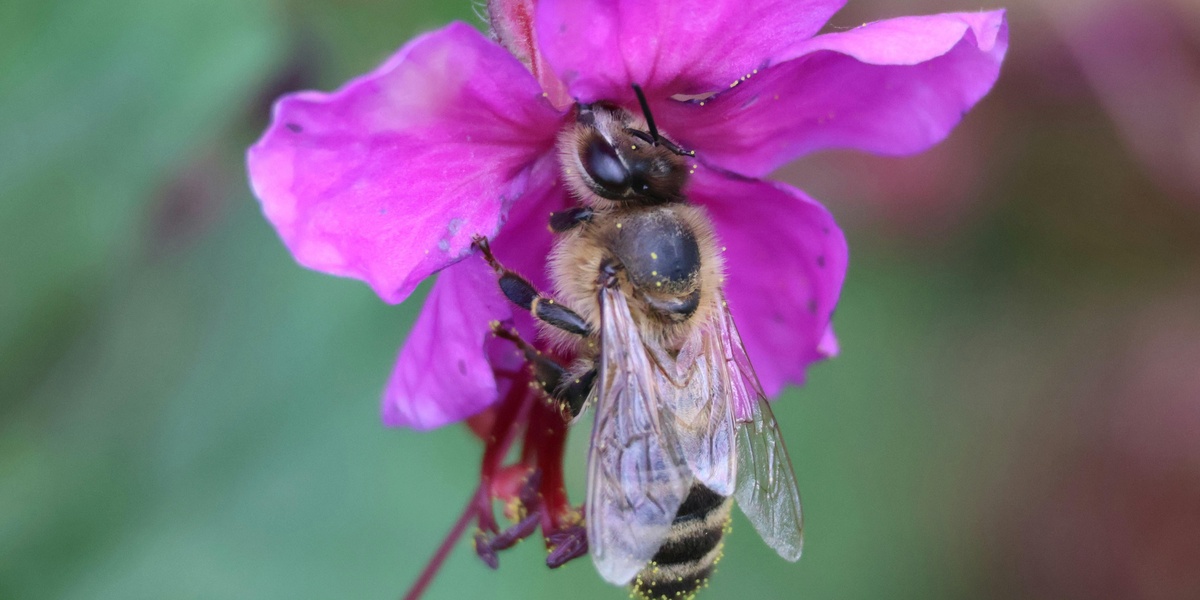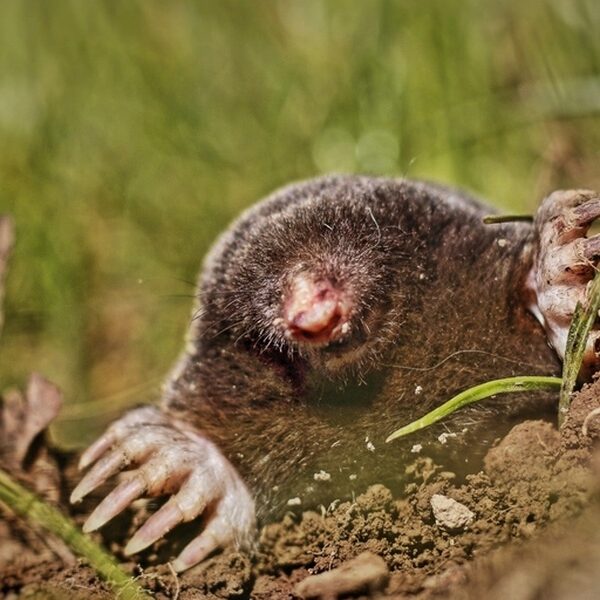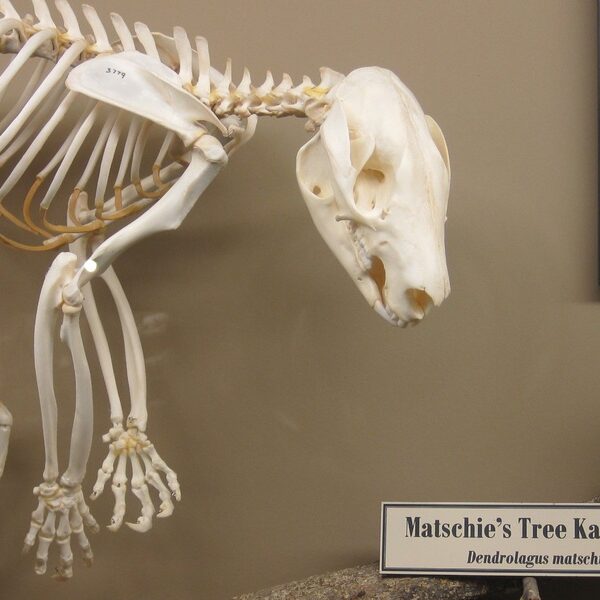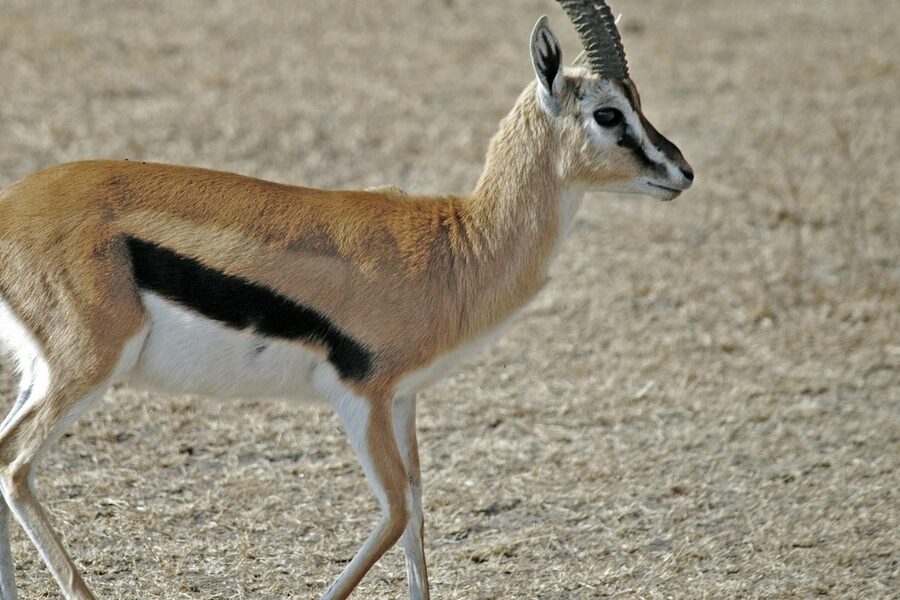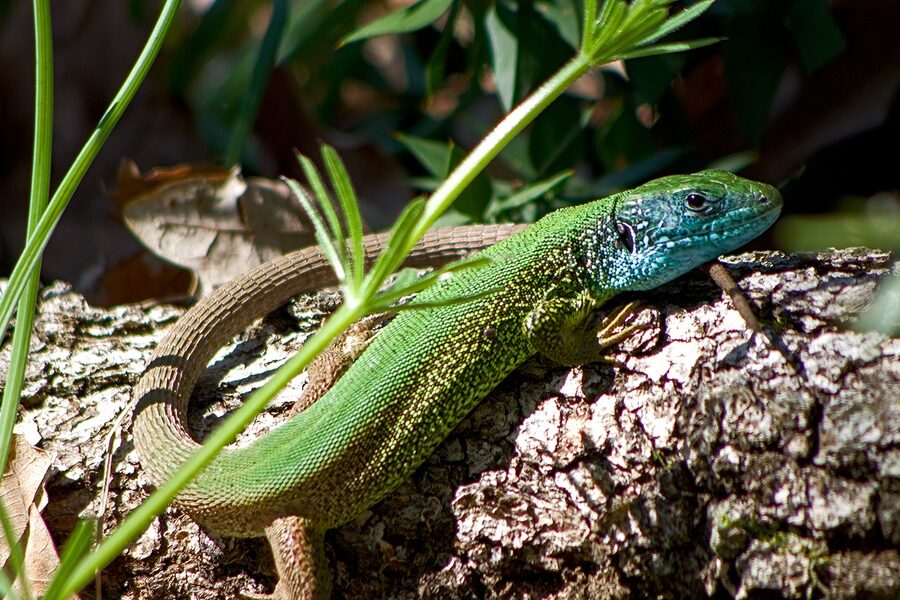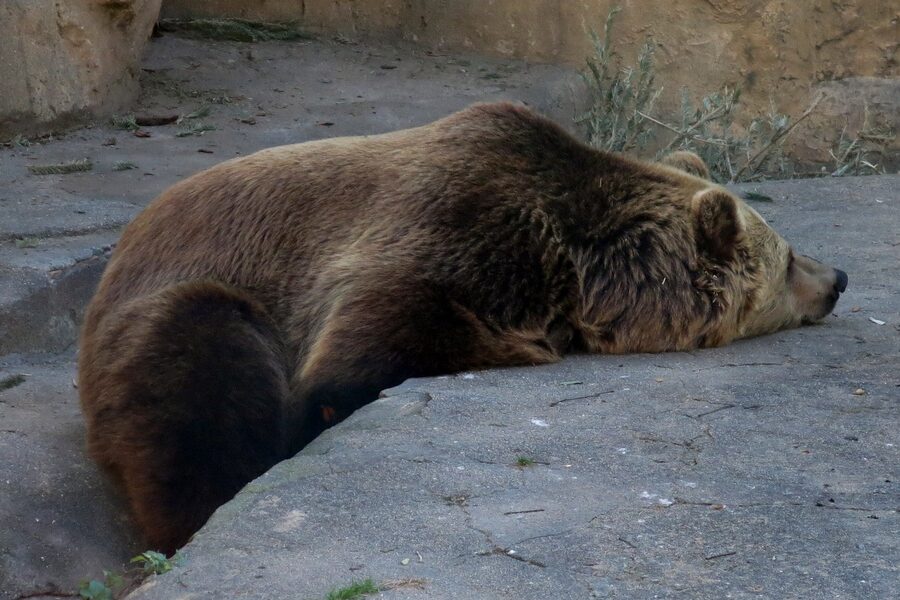From backyard gardens to forest edges, insects shape the places we live by pollinating plants, recycling nutrients and sometimes nibbling on crops. This list brings together common and lesser-known species so you can quickly see who’s sharing your yard, trail or field.
There are 30 Insect Examples, ranging from Aphid to Yellowjacket Wasp. For each entry the Scientific name, Order and Size (mm) are shown so you can compare traits at a glance — you’ll find below.
How can I use this list to identify an insect I found?
Start by noting size and basic body shape, then compare those traits to the Order column (for example, beetles vs. flies). Use the Scientific name to look up images and regional guides if you need confirmation; the Size (mm) helps rule out similar species.
Which of these insects are helpful or harmful in a garden?
Many on the list are beneficial (pollinators, predators, decomposers), while others like aphids feed on plants and yellowjackets can sting. Check each species’ entry to learn its typical behavior and whether it’s likely to harm or help your plants.
Insect Examples
| Name | Scientific name | Order | Size (mm) |
|---|---|---|---|
| Ladybug | Coccinella septempunctata | Coleoptera | 5-8 |
| Monarch Butterfly | Danaus plexippus | Lepidoptera | 90-100 |
| Honey Bee | Apis mellifera | Hymenoptera | 15 |
| House Fly | Musca domestica | Diptera | 6-7 |
| Periodical Cicada | Magicicada spp. | Hemiptera | 25-50 |
| Praying Mantis | Mantis religiosa | Mantodea | 50-75 |
| Common Green Darner | Anax junius | Odonata | 70-80 |
| Field Cricket | Gryllus spp. | Orthoptera | 15-25 |
| Japanese Beetle | Popillia japonica | Coleoptera | 10-12 |
| Bumblebee | Bombus spp. | Hymenoptera | 10-25 |
| Cabbage White Butterfly | Pieris rapae | Lepidoptera | 30-50 |
| Mosquito | Culicidae family | Diptera | 3-6 |
| Brown Marmorated Stink Bug | Halyomorpha halys | Hemiptera | 17 |
| Carpenter Ant | Camponotus spp. | Hymenoptera | 6-13 |
| Atlas Moth | Attacus atlas | Lepidoptera | 250-300 |
| Goliath Beetle | Goliathus goliatus | Coleoptera | 60-110 |
| Common Walkingstick | Diapheromera femorata | Phasmatodea | 70-100 |
| German Cockroach | Blattella germanica | Blattodea | 13-16 |
| Firefly | Lampyridae family | Coleoptera | 5-25 |
| Yellowjacket Wasp | Vespula spp. | Hymenoptera | 10-16 |
| Luna Moth | Actias luna | Lepidoptera | 80-115 |
| Aphid | Aphidoidea superfamily | Hemiptera | 1-10 |
| Robber Fly | Asilidae family | Diptera | 5-30 |
| Differential Grasshopper | Melanoplus differentialis | Orthoptera | 28-50 |
| European Earwig | Forficula auricularia | Dermaptera | 10-15 |
| Bed Bug | Cimex lectularius | Hemiptera | 5-7 |
| Eastern Subterranean Termite | Reticulitermes flavipes | Blattodea | 3-6 |
| Cat Flea | Ctenocephalides felis | Siphonaptera | 1.5-3 |
| Crane Fly | Tipulidae family | Diptera | 10-75 |
| Ebony Jewelwing | Calopteryx maculata | Odonata | 35-50 |
Images and Descriptions

Ladybug
Found worldwide in gardens and fields where they act as voracious predators of aphids, making them a gardener’s best friend. A single ladybug can eat up to 5,000 aphids in its lifetime. Their bright colors warn predators of their foul taste.
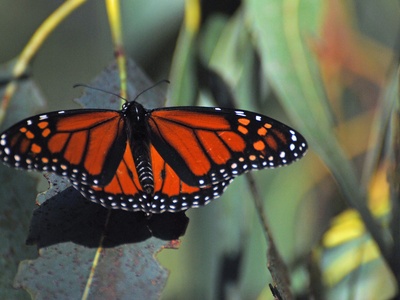
Monarch Butterfly
Famous for its long-distance migration across North America. As pollinators, adults feed on nectar. Their caterpillars feed exclusively on milkweed, which makes them toxic to predators and is a classic example of chemical defense in insects.
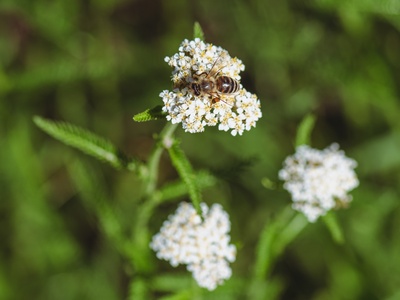
Honey Bee
Living in social colonies worldwide, honey bees are critical pollinators for countless crops and wild plants. They produce honey and beeswax. A worker bee communicates flower locations to the hive through a special “waggle dance.”
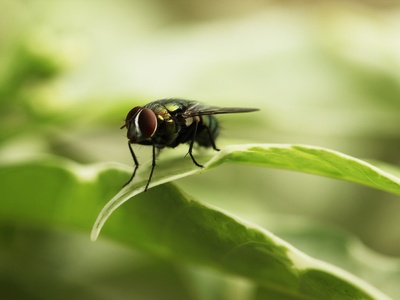
House Fly
Found globally wherever humans live. They are primarily decomposers, feeding on decaying organic matter. While often pests for transmitting diseases, their larvae (maggots) are crucial in breaking down waste. They taste with their feet!
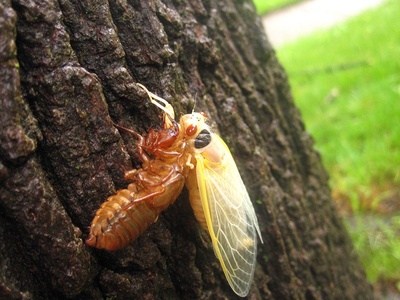
Periodical Cicada
Known for their loud buzzing song in eastern North America. They spend 13 or 17 years underground as nymphs before emerging in massive numbers. They feed on tree sap and serve as a sudden, abundant food source for many predators.
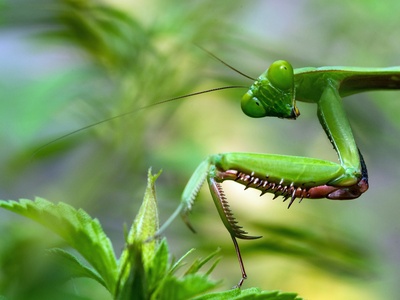
Praying Mantis
A formidable ambush predator found in temperate and tropical regions worldwide. Using spiny forelegs to snatch insects, they are beneficial in gardens. They can turn their triangular heads 180 degrees to scan their surroundings for prey or threats.
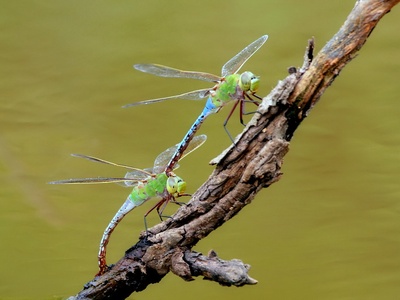
Common Green Darner
A large, common dragonfly across North America. An agile aerial predator, it preys on mosquitoes, flies, and other insects. It is one of the few dragonfly species known to undertake a multi-generational seasonal migration, similar to monarch butterflies.
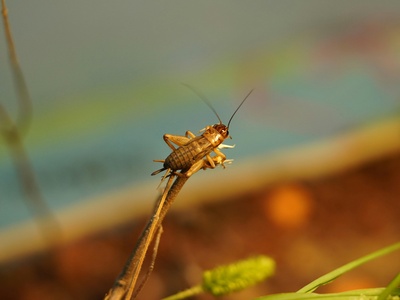
Field Cricket
Found in fields and gardens worldwide, these omnivores are known for the male’s chirping song, produced by rubbing his wings together to attract mates. The chirp rate changes with temperature, a phenomenon described by Dolbear’s Law.
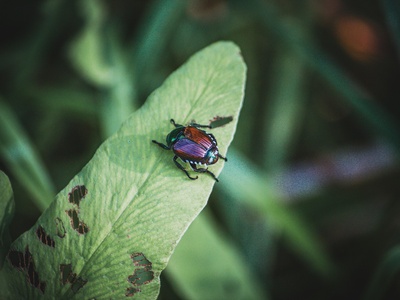
Japanese Beetle
Native to Japan, now an invasive pest in North America and Europe. Adult beetles are herbivores that skeletonize the leaves of over 300 plant species. Their larvae, or grubs, are major pests that damage lawns by feeding on grass roots.
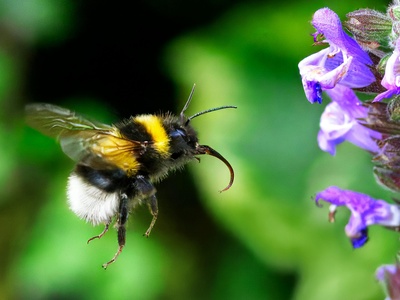
Bumblebee
These fuzzy, social bees are crucial pollinators found mostly in the Northern Hemisphere. They are vital for crops like tomatoes, which require “buzz pollination.” Unlike honey bees, a bumblebee can sting multiple times without dying.
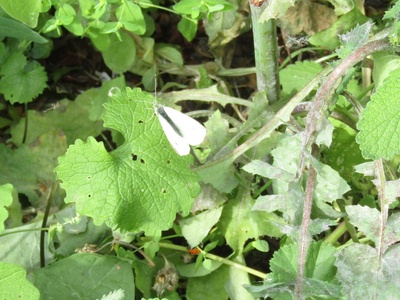
Cabbage White Butterfly
Originally from Europe, it is now one of the most common butterflies worldwide. Its caterpillars, known as “cabbageworms,” are significant pests of cabbage and other mustard-family plants. Their white wing color comes from pigments made from waste products.
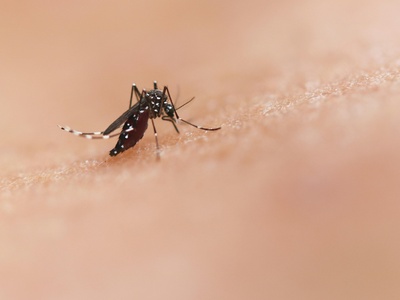
Mosquito
Found globally, especially near water where their larvae develop. Female mosquitoes feed on blood to nourish their eggs, transmitting serious diseases. Only females bite; males are harmless and feed on plant nectar.
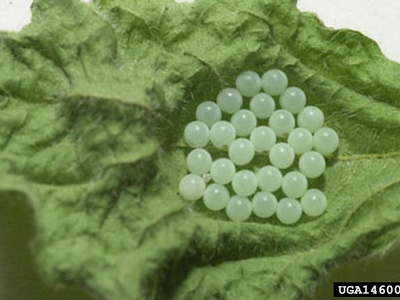
Brown Marmorated Stink Bug
Native to Asia, now an invasive agricultural and household pest worldwide. It feeds on fruits and vegetables with piercing mouthparts. When threatened, it releases a pungent, unpleasant odor from glands on its abdomen as a defense mechanism.
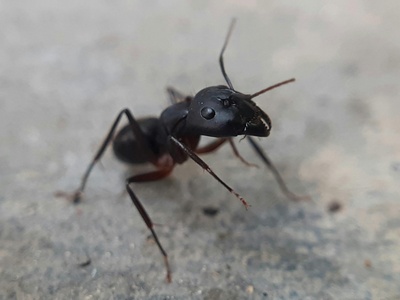
Carpenter Ant
Lives in colonies inside wood across the globe. Unlike termites, they do not eat wood but excavate it to create smooth galleries for their nests. They are omnivores, feeding on other insects, honeydew, and sweet foods.
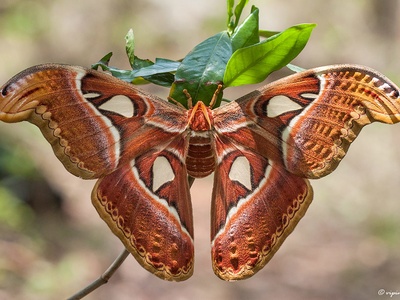
Atlas Moth
Found in the tropical forests of Southeast Asia, it is one of the largest moths in the world by wingspan. The adult moth has no functional mouthparts and lives only for a few days to reproduce. Its wingtips impressively mimic a snake’s head.
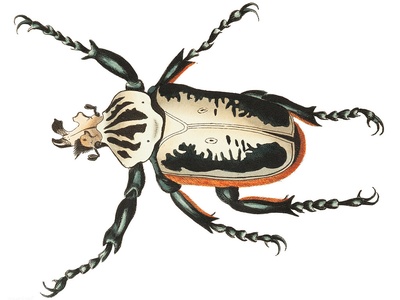
Goliath Beetle
One of the heaviest insects on Earth, native to the tropical forests of Africa. Larvae are decomposers in rotting wood, while adults primarily eat tree sap and fruit. A large adult can be heavier than a small mouse.
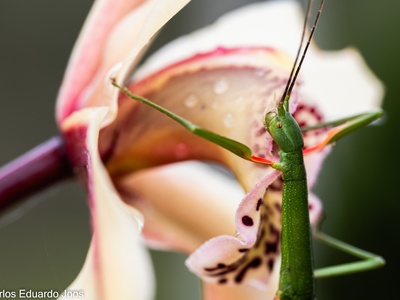
Common Walkingstick
Found in North American forests, this herbivore is a master of camouflage, perfectly resembling a twig to avoid predators. If a leg is lost to a predator, a young walkingstick can often regenerate it during its next molt.
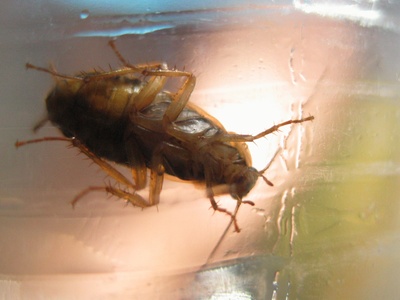
German Cockroach
A common indoor pest found worldwide. This incredibly resilient omnivore scavenges and thrives in human dwellings, especially kitchens. It is one of the fastest-reproducing indoor roaches, contributing to its status as a major pest.
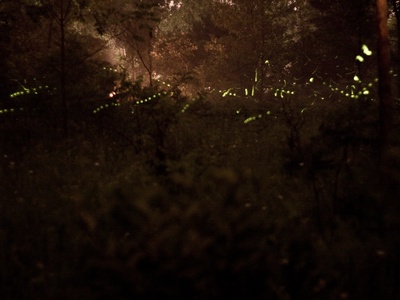
Firefly
Found in temperate and tropical regions, these beetles are famous for their bioluminescence, used to attract mates. The light is a “cold light,” with nearly 100% of the energy released as light, not heat, making it extremely efficient.
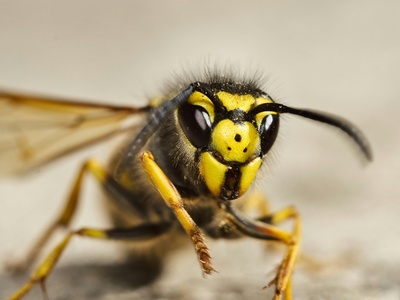
Yellowjacket Wasp
Social wasps found across the Northern Hemisphere. They are aggressive predators of other insects but also scavenge for sugars and proteins at picnics. Unlike honey bees, they can sting repeatedly and build paper nests in various locations.
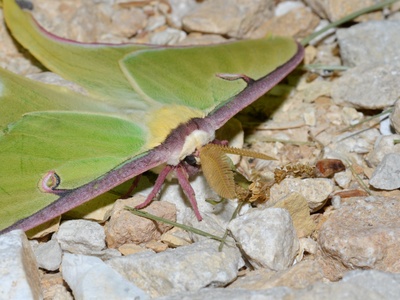
Luna Moth
A large, beautiful pale-green moth found in the forests of North America. Like the Atlas moth, the adult has no mouth and lives for about a week to mate. Its long, elegant tails are thought to confuse the echolocation of predatory bats.
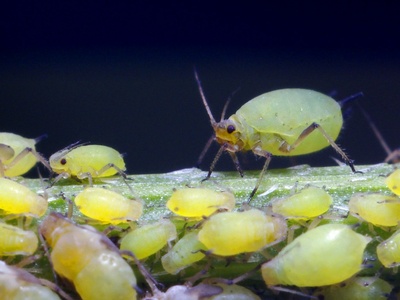
Aphid
Small, sap-sucking insects found on plants worldwide, making them major agricultural pests. Many species can reproduce asexually, allowing populations to explode rapidly. They excrete a sugary waste called “honeydew,” which is farmed by ants.
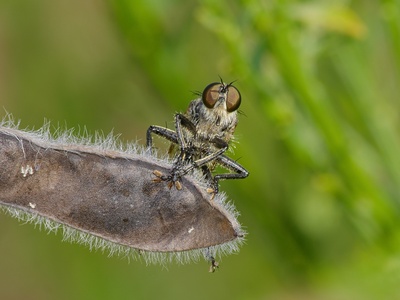
Robber Fly
Powerful, bristly flies found globally. They are aggressive aerial predators that ambush other insects, including bees and dragonflies, in mid-air. They inject venom and digestive enzymes into prey with a short, stout proboscis.
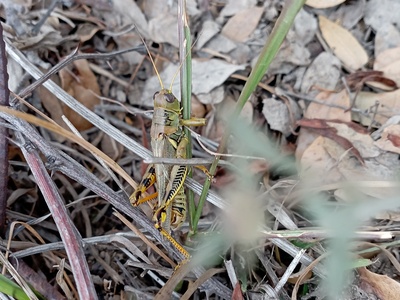
Differential Grasshopper
A large grasshopper native to North America. It is a major agricultural pest, known for forming swarms that can devastate crops. The brown liquid it “spits” when handled is actually digestive juice, used as a defense mechanism.
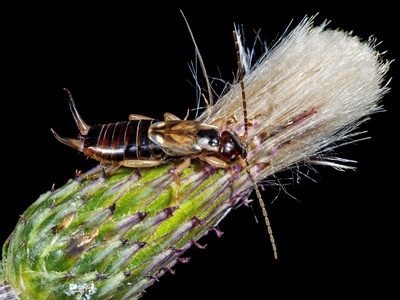
European Earwig
Found worldwide, this omnivore is known for the prominent pincers on its abdomen. Despite the myth, they do not crawl into human ears. They are one of the few non-social insects where females show maternal care for their eggs.
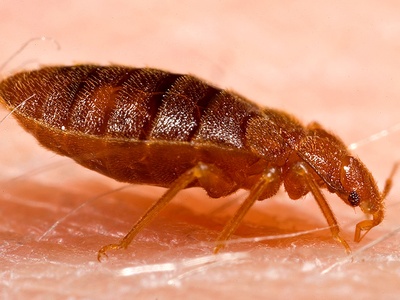
Bed Bug
A small, parasitic insect found globally. It hides in cracks near beds, emerging at night to feed on human blood. They are notoriously difficult to eradicate and can survive for many months without feeding.
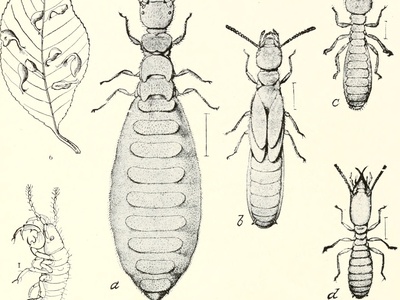
Eastern Subterranean Termite
The most common termite in North America, living in huge underground colonies. It is a major structural pest, consuming wood cellulose from the inside out. They are social insects with a caste system of workers, soldiers, and reproductives.
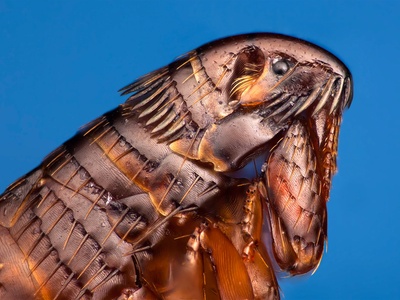
Cat Flea
The most common flea species, found on cats, dogs, and other mammals worldwide. This wingless parasite feeds on blood and is known for its incredible jumping ability, leaping up to 50 times its body length to find a host.
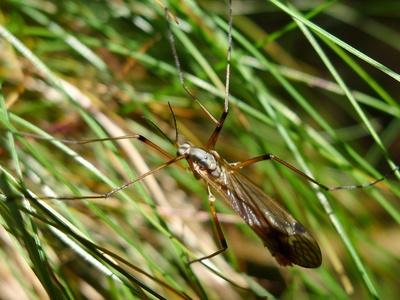
Crane Fly
Often mistaken for a giant mosquito, these delicate flies are harmless. Found near water worldwide, most adults do not eat at all. Their larvae, called “leatherjackets,” live in the soil and feed on decaying plant matter and roots.
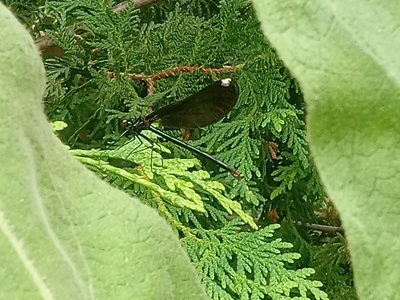
Ebony Jewelwing
A beautiful damselfly with jet-black wings, found along slow-moving streams in eastern North America. Unlike dragonflies, damselflies hold their wings together over their back at rest. Males perform a fluttering courtship flight.
